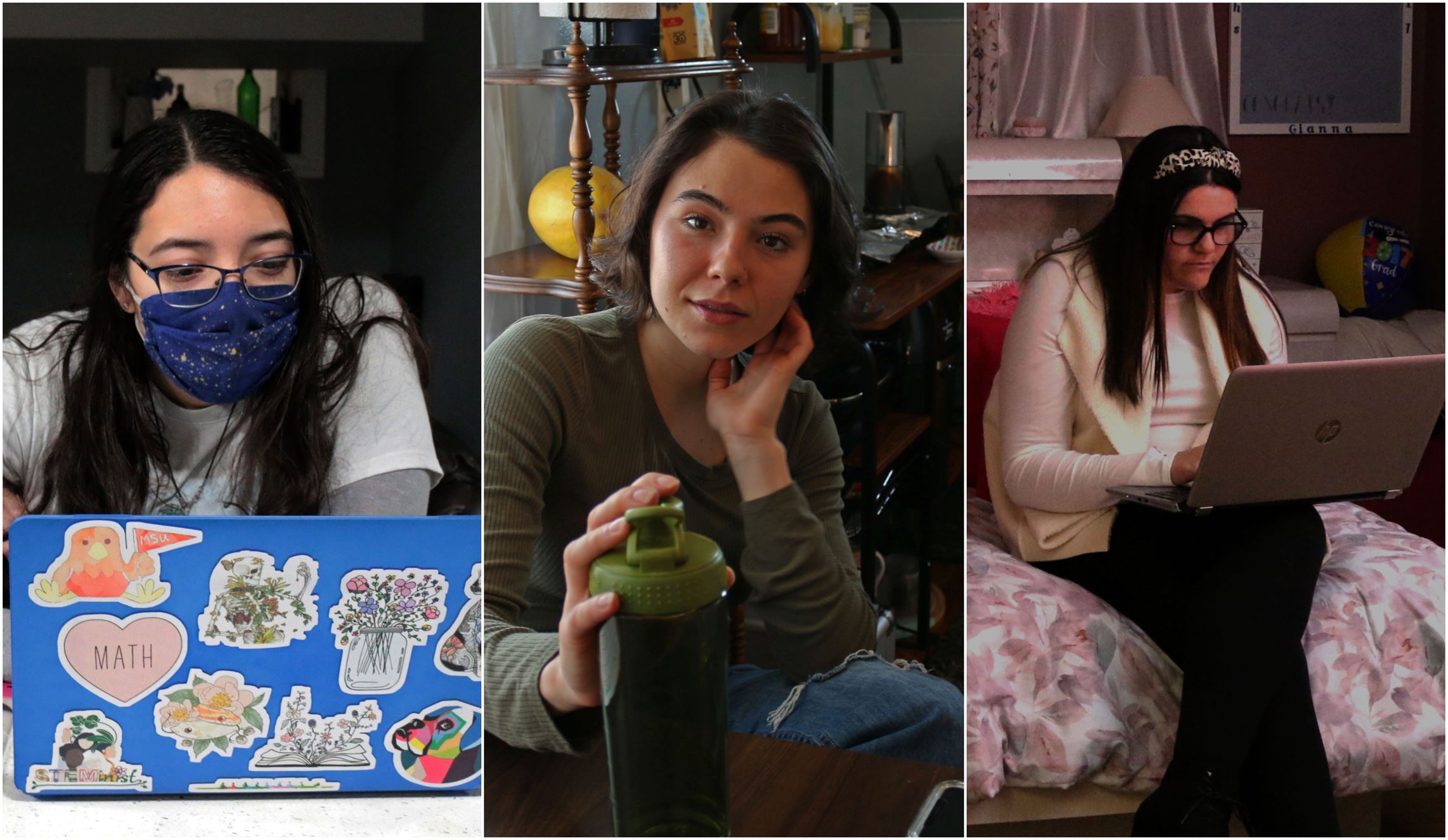During the first week in March, The Montclarion will be publishing content related to the two-year commemoration of the coronavirus (COVID-19) pandemic and the effect it has had on Montclair State University’s campus community #Since2020.
Students at Montclair State University were joyous about an extended spring break back in March 2020. The coronavirus (COVID-19) was just an unknown virus for the world. Little did students know, they would be moved out of their dorms sooner than expected to go under lockdown at home once spring break ended.
Vacant dorm rooms collected dust for the next year. Commuters found themselves without a commute. Everyone suddenly had to adjust to school and their home being in the same place for the first time — and for most, it lasted until the fall 2021 semester, a year and a half after they initially went online.
In isolation, students felt the traumas of having to avoid a mysterious virus on top of personal problems piling up as the pandemic rolled on. They suddenly found their personal space melding together and becoming a shared classroom with their siblings, a daycare center for their children, their parents’ home office and their space to decompress.
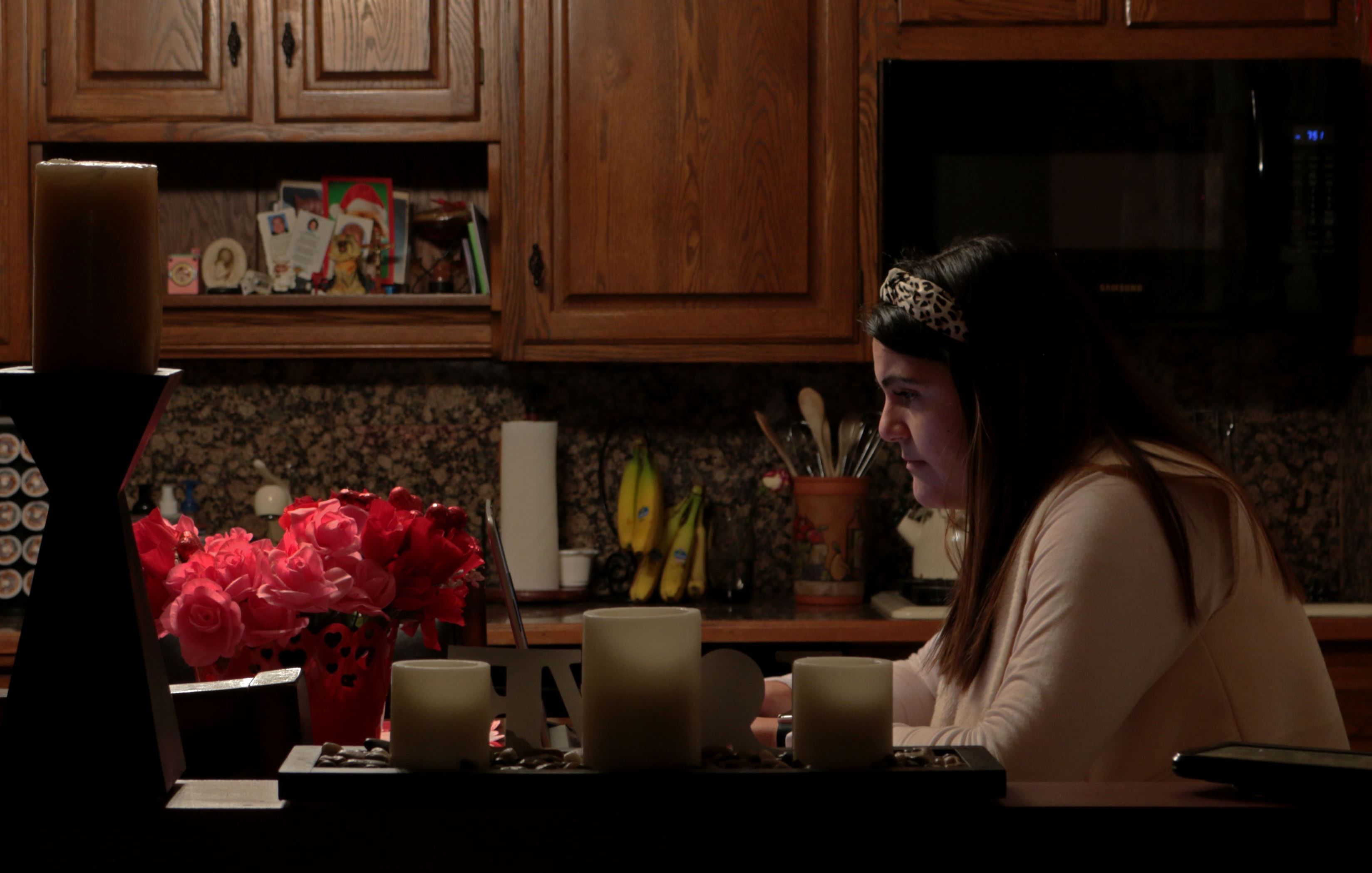
Gianna Fazzini sits in her kitchen where she spent most of her time during the pandemic doing Zoom.
Joni Mae De Los Santos | The Montclarion
The convenience of not having to wake up early to commute to campus was a pleasurable experience at first for Gianna Fazzini, a senior math major. When Montclair State moved to Zoom, she no longer had to wake up early to do her morning routine and was able to avoid the stress of finding parking. However, as time went on, she lost appreciation for the convenience.
“I was in the midst of my hardest math classes [and] it became so hard for me,” Fazzini said. “I can’t learn math through a computer screen. There was that convenience of not having to wake up early, but at the same time, I [wished] I was in the classroom.”
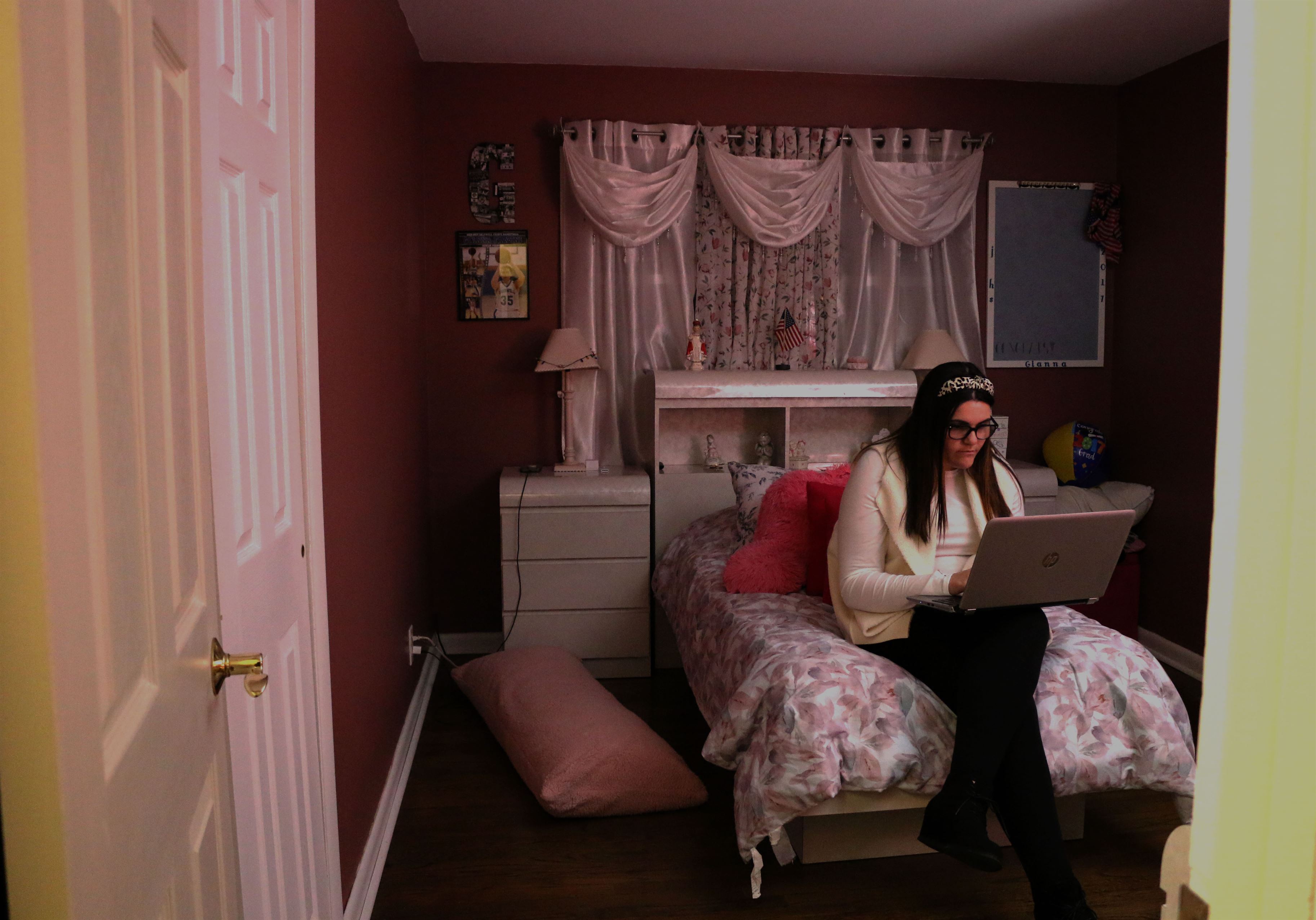
Gianna Fazzini sits in her bedroom after work and goes on her laptop.
Joni Mae De Los Santos | The Montclarion
Now that school and home had combined, Fazzini struggled with the lack of interaction. She was confined to the walls of her home and was only able to go outside during her walks and while working as a tour guide. On top of that, she felt a sense of fear during the pandemic.
“I did feel the sense that this is never going to end,” Fazzini said. “I felt like the world was shut down in a matter of 24 hours and I did feel a sense of fear. Fear was accompanied with anxiety.”
The lack of things to do added to the dread of COVID-19. Fazzini coped with her newly found free time by baking brownies and watching TikTok.
“I would wake up about 10 minutes before class started and I would get my laptop ready,” Fazzini said. “As class was going, I would eat breakfast, and there were times where I would completely step away from my laptop [and] not even [be] listening to class. And then once class was over, I would shower, get dressed, brush my teeth [and] do all that stuff. Then, my day would be over.”
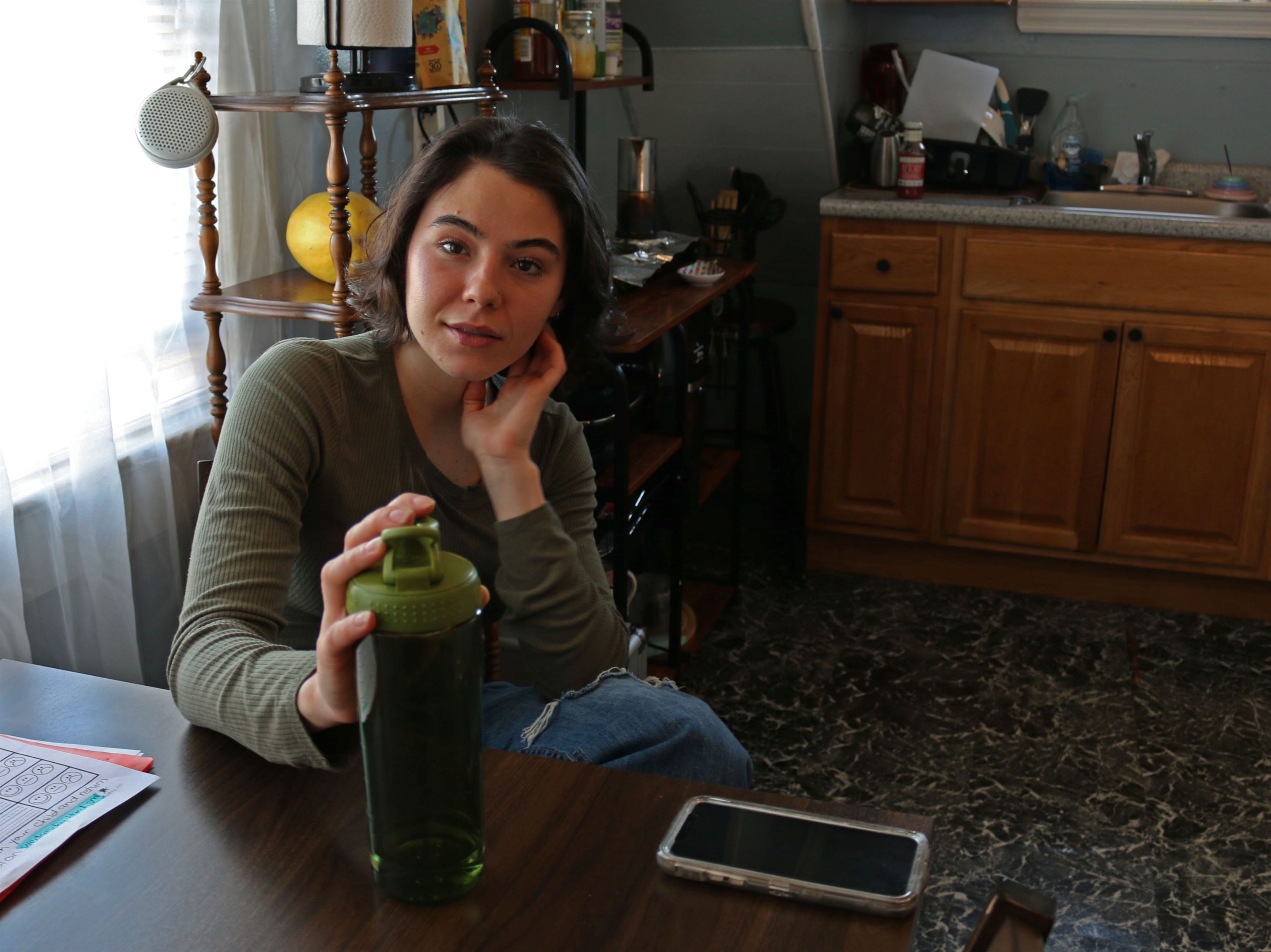
Ana Carolina Populim-Boykin sits at her dining room table that doubled as her office for school.
Joni Mae De Los Santos | The Montclarion
Some students adjusted to the pandemic at home better than others. For Ana Carolina Populim-Boykin, a senior public relations major, adjusting to online school as a full-time student was a different experience. A student and a mother, Populim-Boykin, along with her husband, moved into an apartment right above her parents when the pandemic hit, which allowed them to be in a comfortable environment.
“In a way, it was like a blessing. All three of us [had] never been at home so consistently,” Populim-Boykin said. “It was just really cozy and nice.”
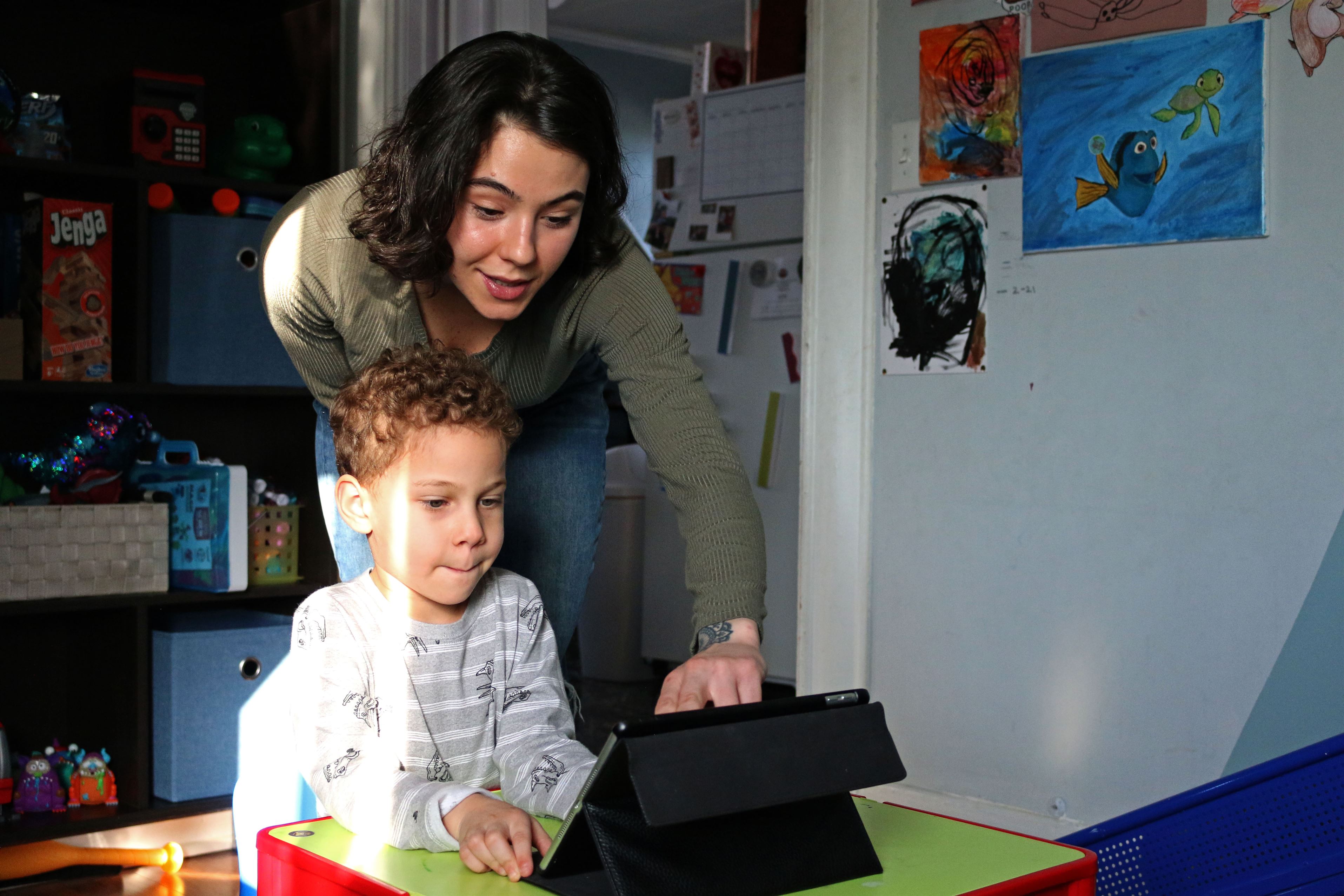
Ana Carolina Populim-Boykin, 28, helps her son Apollo, 4, with his iPad.
Joni Mae De Los Santos | The Montclarion
Most of the time, her schedule revolved around her son and classes. Her usual routine consisted of making breakfast for her son who was only three years old at the time, then sitting at her kitchen table to hop on Zoom. She would be in and out of her Zoom camera to entertain her son.
The combination of school and home not only affected Populim-Boykin, but also her son. Before, Populim-Boykin was able to drop him off at daycare, go to school herself and pick him up afterward. Once the pandemic started, daycare and school were combined in their two-bedroom apartment in Kearny, New Jersey.
“It was just go, go, go, all the time,” Populim-Boykin said. “I was literally trapped at home doing school with my kid, feeling like I’m not being a good enough mom because my kid is on the iPad while I’m in school.”
A shared experience amongst commuters is the hardship of being involved on campus. Commuters typically leave after class, missing out on interactions in dorms or events that take place on campus. Besides feeling stuck in her kitchen, Populim-Boykin believes she missed out on a college experience.
“I definitely didn’t get the college experience because I’m a commuter, a mom and a lot older than the students,” Populim-Boykin said. “But, I just wanted to get that vibe of the campus experience.”
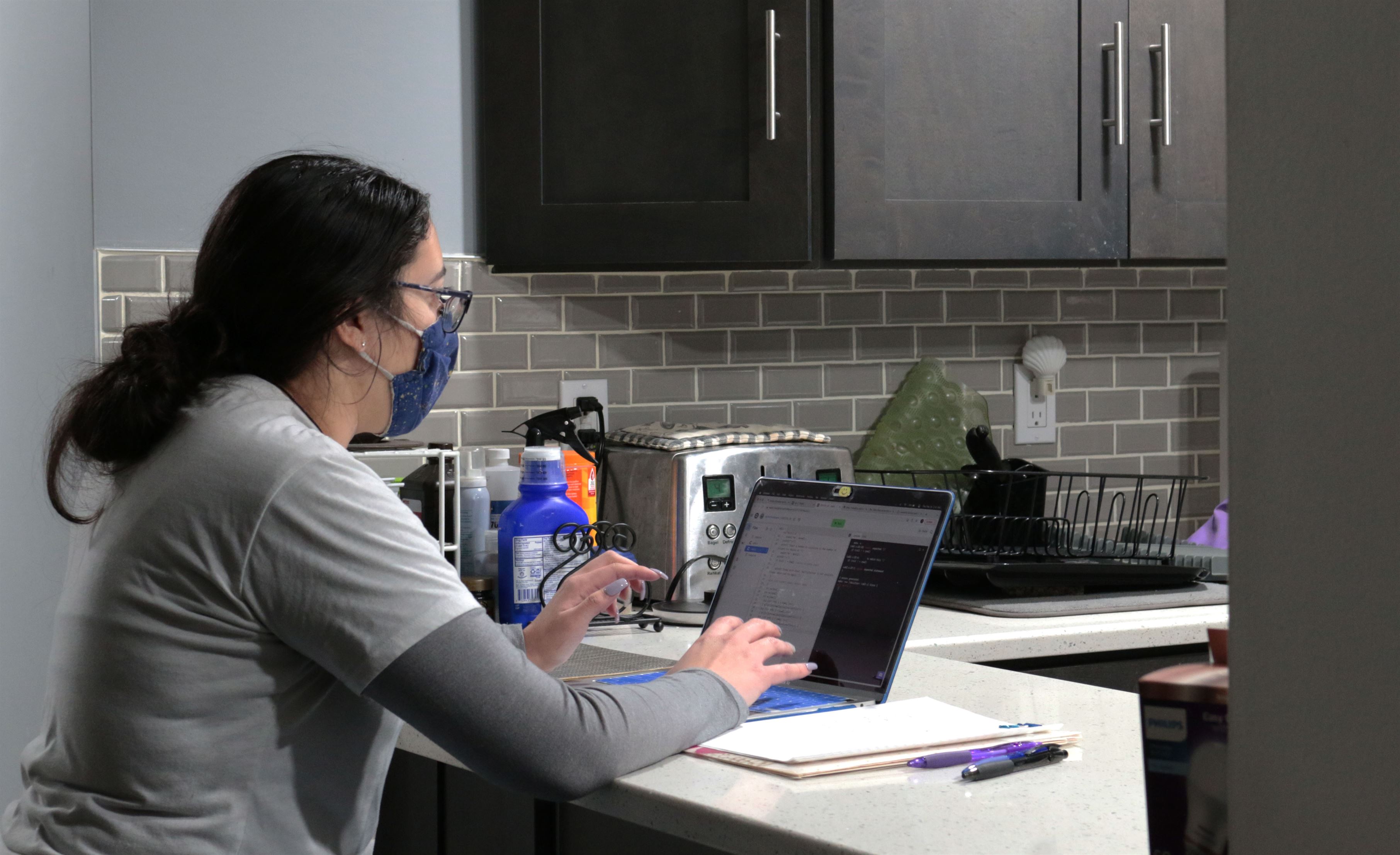
Samantha Navarro usually does homework until midnight in her family’s basement in Belleville, New Jersey.
Joni Mae De Los Santos | The Montclarion
For Samantha Navarro, a senior math major, one of the hardships of the pandemic was physically being around her family all the time but never interacting with them out of fear of infection.
“In my family, whenever we see each other, we’d say, ‘Oh, hi,’ [and give each other a] kiss on the cheek. That’s just the way it was in Hispanic households,” Navarro said. “[But now, you] take off your shoes, you go to your room, you say ‘hi’ from a distance and you can’t do anything more than that because you don’t know what you could possibly bring over.”
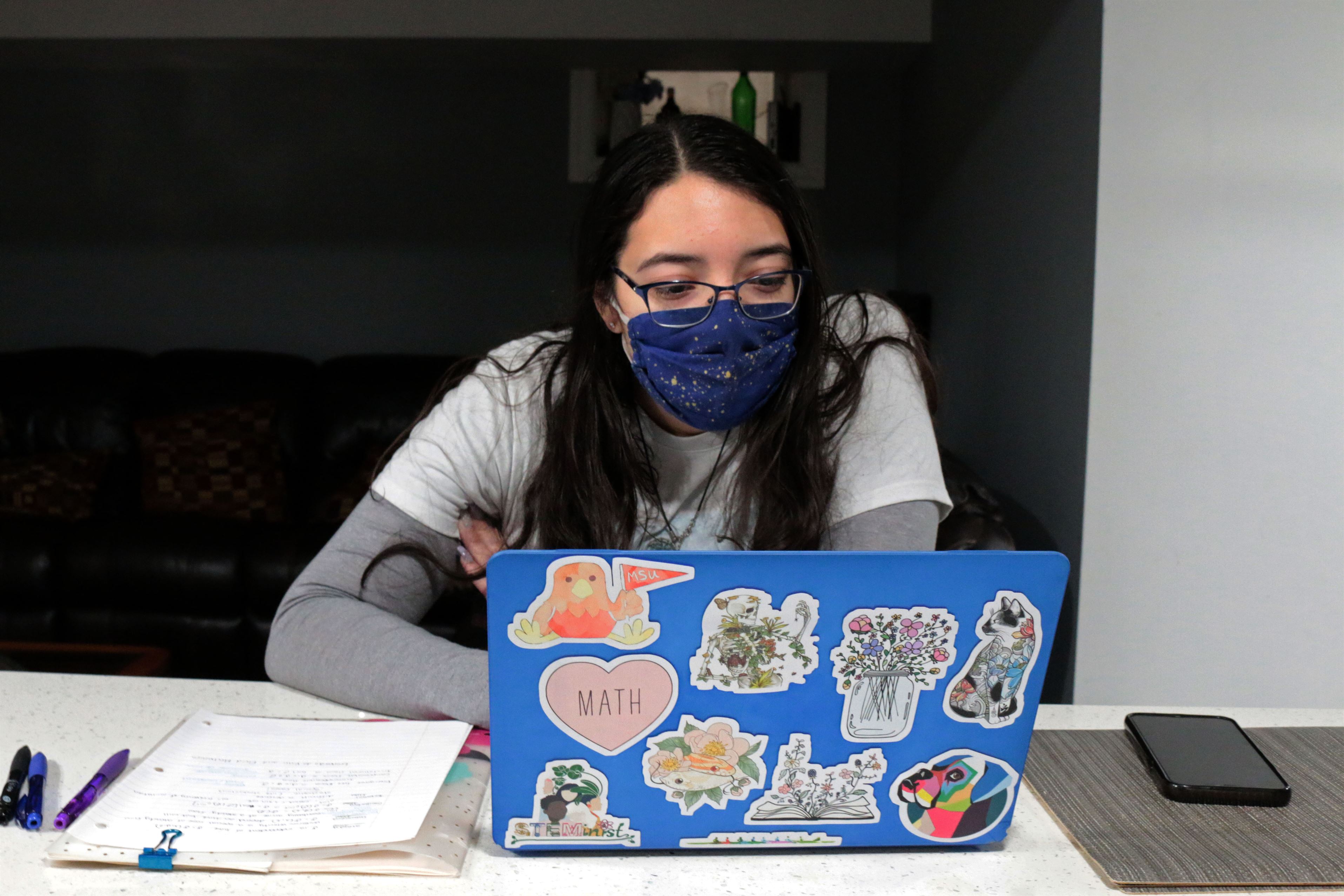
Samantha Navarro spends most of her time now in Belleville, New Jersey at her family’s home.
Joni Mae De Los Santos | The Montclarion
Navarro also struggled with losing three people in her family in October 2020. One family member passed away from COVID-19 and the other two were from cancer. In October 2021, she lost another family member which brought her back to the prior year’s events.
“I remember [in] the fall of 2020, I sent an email out to all of my professors,” Navarro said. “Yes, I was home; yes, I was doing Zoom; but I just needed a break.”

